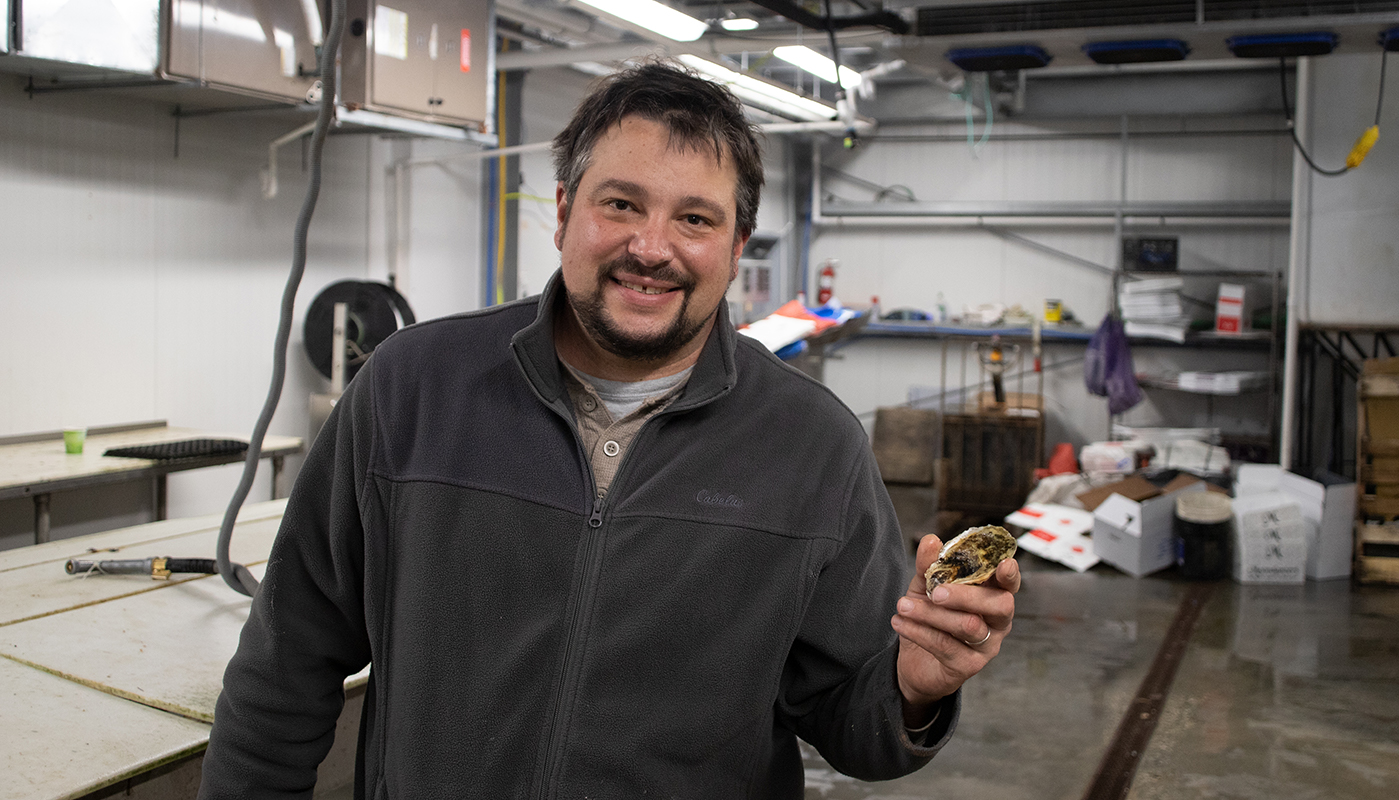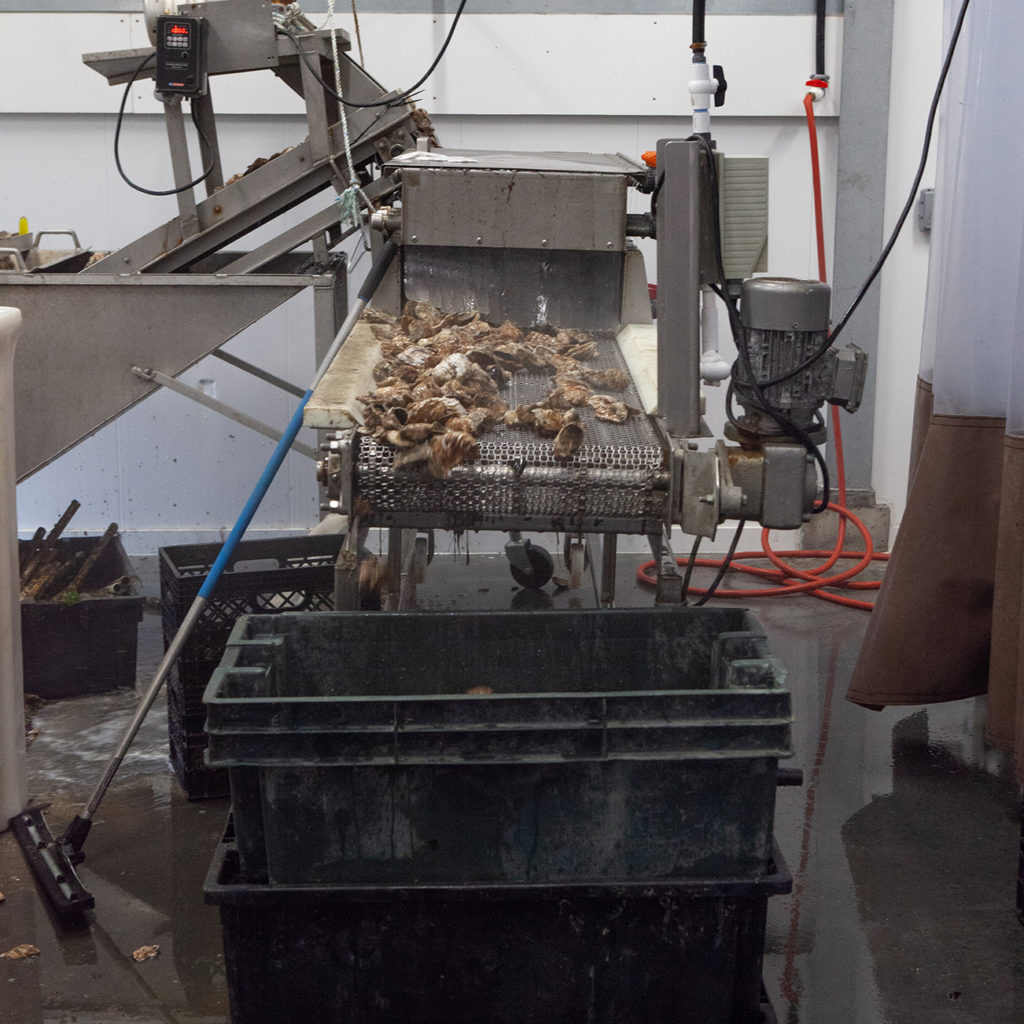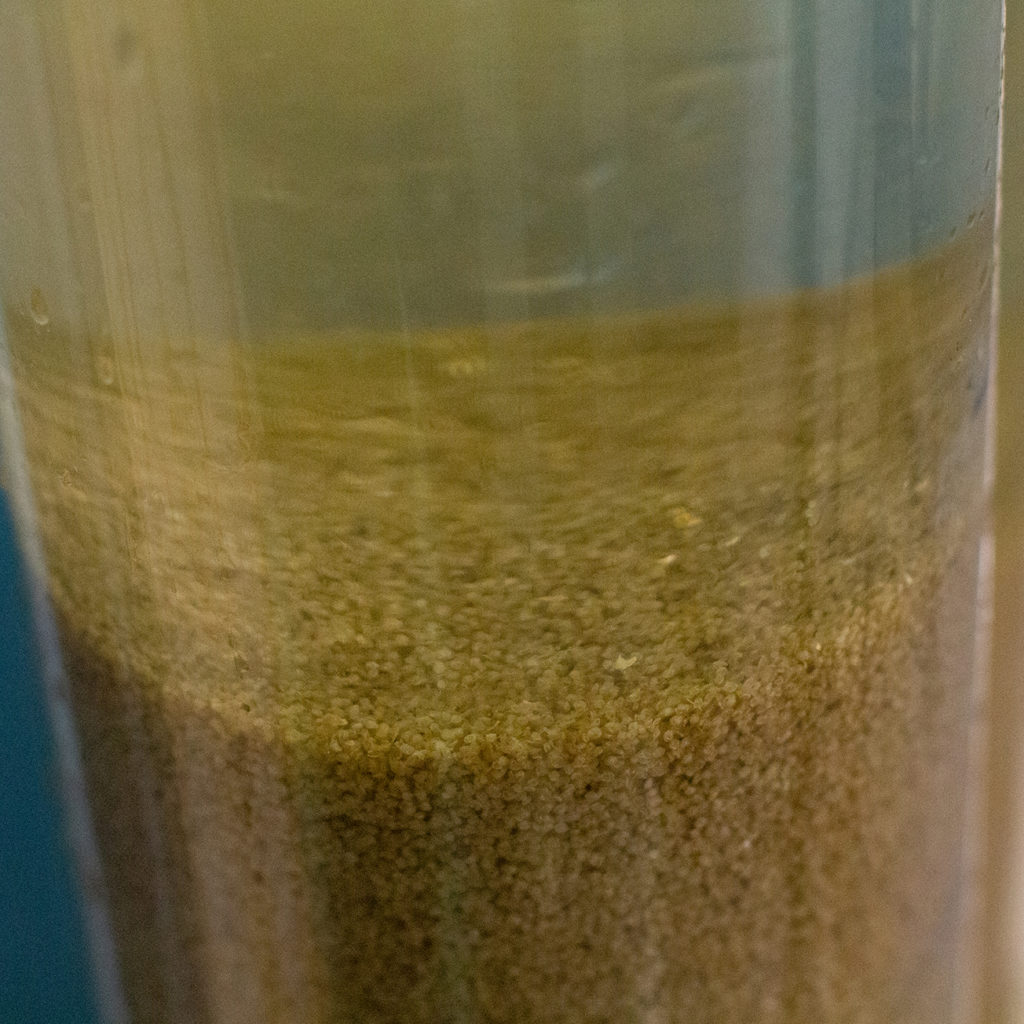Mook Sea Farm, an aquaculture facility on the Damariscotta River in midcoast Maine, has installed energy efficient pumps as well as a solar array. This effort reflects the company’s commitment to reducing its environmental impact and preparing for the effects of climate change.
BACKGROUND
Mook Sea Farm was founded in 1985 by Bill Mook, oyster farming pioneer and influential contributor to Maine’s aquaculture industry. At the farm, they grow tiny seed oysters until they are ready for market. They also sell a portion of their seed oysters to other oyster farms. The operation takes place on aquaculture leases on the Damariscotta River and also in an onshore multi-building facility that requires water flow for its hatchery and for market size oysters held in its land-based facility.
Since its inception, the operation has been consistently growing—especially over the last decade. Recent infrastructure improvements have included a new building where over 500,000 oysters can be stored in a recirculating system driven by large pumps which enable a continual flow of water. These improvements and other general expansions have resulted in more energy usage.
Mook Sea Farm has a vision to “provide the best microalgae and shellfish available while continually working towards reducing [their] impact on the environment.” To support this vision, Mook Sea Farm included a new solar array in their plans as well as technology that helps them cut down on unnecessary energy expenditures—moves that are both good for the business and good for the environment.
HOW IT WORKS
The 90.28 kW solar array was constructed by ReVision Energy, a Maine-based solar company, as part of a large building improvement project in 2017. The building which houses the solar array is used for microalgae culture, packing and shipping, and a land-based tank system for market oysters. The market oysters are stacked in large specialized storage bins and are supplied with running water to keep them healthy, improve their meat quality, and allow for continued shipping during flood closures. This water is pumped up from the river, which is about 600 feet away from the facility, and up to the building’s ceiling where it cascades down through the bins and ends up in tanks below the floor where it is recirculated. The ability to recirculate this water becomes critical when the water conditions in the river are not ideal.
Climate change has caused a drop in seawater pH, making it more acidic. This is detrimental to shell-forming organisms like oysters. Currently, the level of ocean acidification has adverse impacts on larval oysters, and the hatchery’s ability to control water quality by using pumps that can move water up from the river or within a closed system provides an excellent adaptation to these and other impacts of climate change.
In the future, if seawater acidity increases to a point at which the shells of market-sized oysters are also heavily impacted, the land-based oyster storage system could become even more critical—allowing oysters to rebuild shell strength they may have lost due to ocean acidification. Four powerful pumps move that water, and they each have 230-volt electric motors that operate at 7.5 horsepower. By providing their own electricity for these pumps via the solar array, not only is the company able to adapt to the impacts of climate change and reduce their energy costs for a vital part of their operation, they are also able to lower their impact on the environment and their greenhouse gas emissions—all of which are issues of primary importance for Bill Mook and the sea farm.
The pumps are made much more efficient by using drives called variable frequency drives (VFDs). VFDs allow systems to run with varying energy use depending on how much pumping is needed. For the purposes of oyster containment, the VFDs are used to increase or decrease the power at which the pumps operate. When there are more oysters in a stack of bins, they require more flow. When fewer oysters are in holding, there can be less flow and therefore less power usage. The type of pump Mook Sea Farm used previous to this system operated on one of two settings: no power or full power. The VFDs have allowed the pumps to use only as much power as is necessary.

Q&A WITH STEVE ZIMMERMAN, FACILITIES MANAGER AT MOOK SEA FARM
How does using renewable energy and having an energy efficient operation fit in with the values of Mook Sea Farm?
Since about 2009, Mook Sea Farm has become increasingly concerned about climate change, including ocean acidification, which has direct adverse effects on shellfish. We try to be as sustainable as we can, and oysters in themselves are a very ecologically sustainable crop. Oyster farming is good for the environment, in general, and to have infrastructure that supports that ideal is good for the business as a whole.
As the business has grown larger, it has made more sense to implement clean energy initiatives and be as environmentally friendly as we can. We have been growing at a steady rate, so it makes a lot of sense for us to invest in solar to offset a lot of our electrical energy demand. That demand has only gotten higher and more intensive as we grow. We are running recirculating land-based aquaculture systems, which rely on electricity.
In everything we do as a company, we try to take our environmental impact into consideration and, to the best of our ability, have systems in place that minimize our impact. Additionally, from a business standpoint, our energy-efficient systems help our bottom line substantially, but reducing our carbon footprint and helping to mitigate climate change in itself is enough to make it worth it for us.
What does energy use look like at Mook Sea Farm?
The biggest energy users here are definitely the pumps—it’s the recirculating of the water. We have the oyster holding facility’s four large pumps as well as a lot of smaller pumps. Otherwise, there’s energy use from the lighting, which we have largely reduced by using LED lights and timers. We also use motion-activated sensors for lights in the rooms that people enter frequently. Another energy user is our big walk-in cooler, and we also need to chill the water we circulate in the summertime. The oysters are stored in water that’s around 50°F. That’s the temperature at which they go into somewhat of a hibernation state and don’t need to be fed. There’s also electrical demand from our centrifuge, cleanroom air circulation system, and oxygen generators.
The key to mitigating electrical demand for some of our machinery is the use of variable frequency drives (VFDs). Using VFDs, we can modulate the speed and power of the pumps. We don’t have to draw maximum energy when we don’t need it. This also applies to our conveyor belts; they all have motors with adjustable speeds.
We are an industrial facility, but we don’t have three-phase power at Mook Sea Farm. It’s a lot easier to find industrial equipment that runs on three-phase power, so running on single-phase power can be a challenge. However, we are able to use three-phase power equipment because our VFDs work with inverters that have a single-phase input and a three-phase output.
Lastly, as we continue to make other improvements, we try to incorporate the latest technology. We have high-efficiency heating systems and boilers and insulated paneling. All of our renovations have an eye towards efficiency and sustainability.
How do you keep a project like this affordable?
We had one grant from the United States Department of Agriculture through their Rural Energy for America Program (REAP) that came out to about $50,000. There is also potential for rebates and tax credits (read more about applying for grants in this example about the solar arrays at the Cranberry Isles Fishermen’s Co-op). Our solar project was going to cost us about $190,000, but we were able to get it closer to $100,000 after the grant and incentives. That $100,000 was built into the expenses of our building improvement project when we scaled up the operation in 2017.
Do you have any advice for others in the marine industry who might be considering solar?
I think whenever possible, people should do it. It was fairly painless to get it done. ReVision came in and took care of the solar work. It was straightforward and low maintenance in that regard. Solar is a no-brainer, because it has only been a benefit. It has a bit of an upfront cost, but to anyone who is planning to be around for more than five to eight years, it makes sense. For us, we’ll be seeing a return on our investment in about eight years.
RESULTS
In an average year, Mook Sea Farm’s 90.28 kW solar array reduces energy costs for its facility by about 25%. Estimates provided by ReVision Energy predict that this array offsets approximately 100,000 pounds of carbon pollution each year.
RESOURCES
- Mook Sea Farm website
- ReVision Energy website
- USDA.gov – Rural Energy for America Program (REAP) information
- Efficiency Maine – Commercial and Industrial (C&I) Prescriptive Incentive Program
- Efficiency Maine – Commercial and Industrial (C&I) Custom Program
- Energy.gov – Funding opportunities and Tax credit information
The interview above has been edited for clarity and length.



